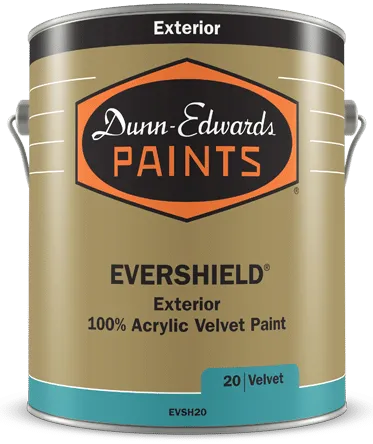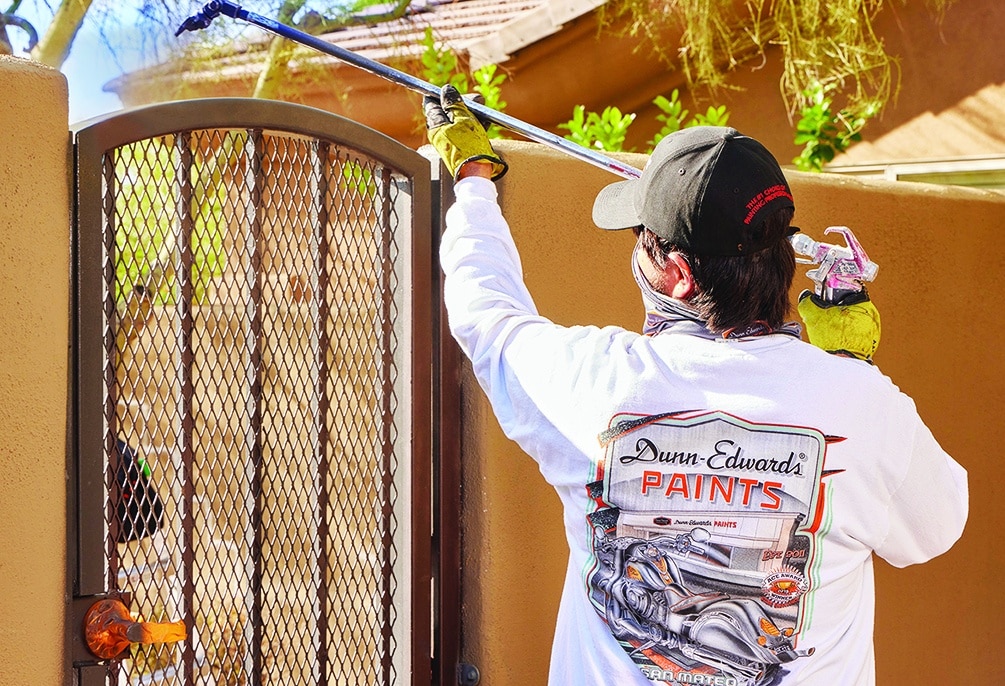Then, Now & Forever® Collection Highlight: The Schindler Grokowsky House
03/10/2020 | specs+spaces staff |
History and Color
Color helps define time periods and architectural styles — bold, exaggerated hues of emerald and teal and red in Art Deco references, cheery yellows and exuberant oranges in southern California’s quintessential Mid-century modern design. And for that reason, color has the power to transport us in time. To honor the colors used in architecture across the American West, Dunn-Edwards has partnered with Architectural Resources Group (ARG), a group of conservators and architects who meticulously research, catalog, and conserve colors used in all sorts of historical buildings, from Beaux Arts and Victorian mansions to Art Deco and postwar Modernism homes. The result of this research is Dunn-Edwards Then, Now & Forever® paint collection of 300 colors, 142 of which are historically-accurate and 158 that are trending today.
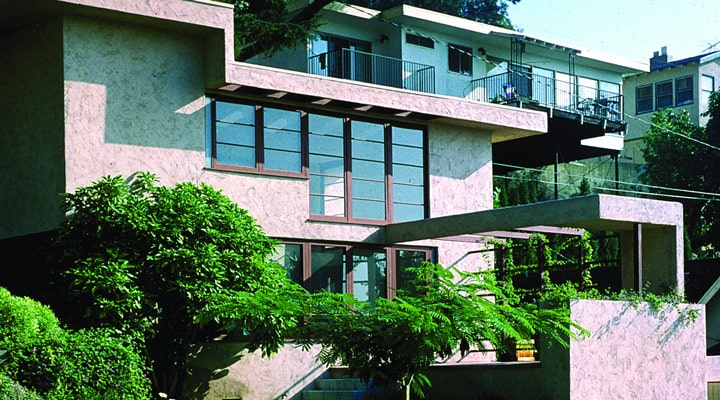
Schindler-Grokowsky House
One of these historic resources cataloged was the Schindler-Grokowsky house located in South Pasadena, California. South Pasadena is a city full of noteworthy landmarks, stately mansions, large, classic California Craftsman houses and Spanish-style bungalows. Its homey small-town vibe, quaint main streets, and historic buildings have acted as a common Hollywood backdrop. For example this over-130-year-old clapboard-house in South Pasadena was used as Michael Myers childhood home in the film Halloween.

The city can count the Schindler-Grokowsky house as another of one of its noteworthy places. The unique home, nestled in the hills on the edge of town, was built in 1928 by prominent architect Rudolph Michael Schindler (R.M. Schindler) for couple David Nathan and Fae Grokowsky. Austrian-born architect Schindler, a contemporary and friend of Richard Neutra, developed his modernist point of view predominately around
southern California, gaining notoriety for his single family homes. These include homes such as the Lovell Beach House, the Tischler House, and his namesake, Schindler House.
The home's streamlined appearance — horizontal planes and sharp right angles — are reminiscent of the work of Frank Lloyd Wright for whom Schindler worked from 1918 to 1931, more so than the gilded decadence of other 1920s Art Deco-era buildings. Schindler is considered one of the fathers of modernism, a movement that fostered an ethos of function over aesthetic beauty and an exclusion of ornamentation. Taking these into account, the Schindler-Grokowsky House is an early example of budding modernism in architecture.
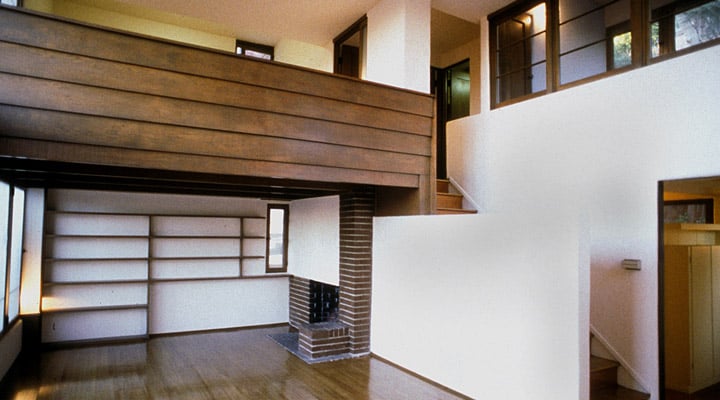
Historic Colors of The Schindler-Grokowsky Home
The home served as important cultural and colorful touchstone, allowing Dunn-Edwards and ARG to gather samples and cross-reference historic yellows, reds, browns and other warm neutrals original to the home and its time period in order to build our truly authentic historic color collection. From there, the colors were matched to the Munsell Color System color chips in order to create reference points for Dunn-Edwards’ color lab, which created paint formulas based on said reference points. Dunn-Edwards’ own color expert, Sara McLean then worked closely with ARG, to determine which formula was historically accurate before the color received final approval. As a result of this careful work, seven of Dunn-Edwards Then, Now, & Forever® paint colors were derived from colors original to the Schindler-Grokowsky home and represent the colors authentic to International and Modern style architecture: Schindler Brown (DET659), Hollywood Starlet (DET493), Revival Red (DEA154), Santa Fe Sunrise (DET468), Sonoma Chardonnay (DET471), Suffragette Yellow (DET487), and Bakelite Yellow (DET657).

Revival Red was found ion the home's exterior, along with Suffragette Yellow, and the maple brown sugar tone is named for the architect himself, Schindler Brown.
The home’s interior color palette consisted of Santa Fe Sunshine, Hollywood Starlet, Bakelite Yellow, and Sonoma Chardonnay, a hue which was also traced to the Fuller Paint catalog (1909-1928) and the General Paint catalog of 1930.
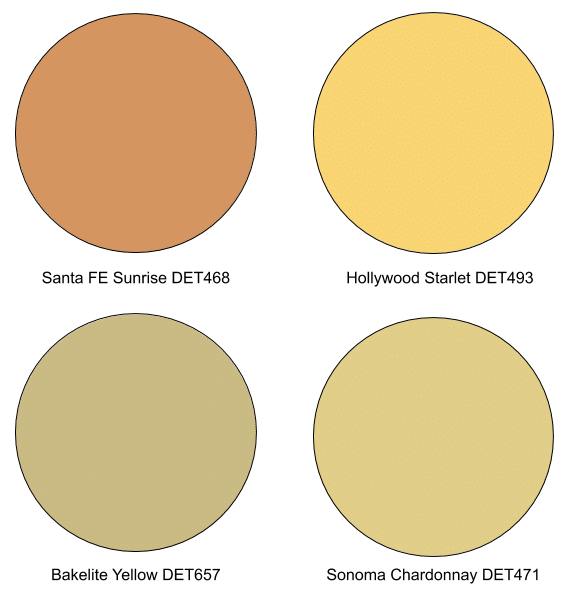
ARG and Dunn-Edwards have seen a number of the same yellows in the historic resources they examined, solidifying further the colors’ historical accuracy and prominence within its particular time period. For example, much like the Schindler-Grokowsky house, the Fox Theater in Stockton, California also showcases the soft apricot color known as Suffragette Yellow.
For more on how architectural styles in the American West have informed the colors in the Then, Now & Forever® paint collection, reference our guide on International, Mid-Century Modern, and Ranch architecture. Learn more about the architectural resources which have played key roles in defining our historically-accurate line of paint colors, like San Francisco’s Maritime Museum, the homes of Cliff May, and The Mission Inn in
Riverside, California.




